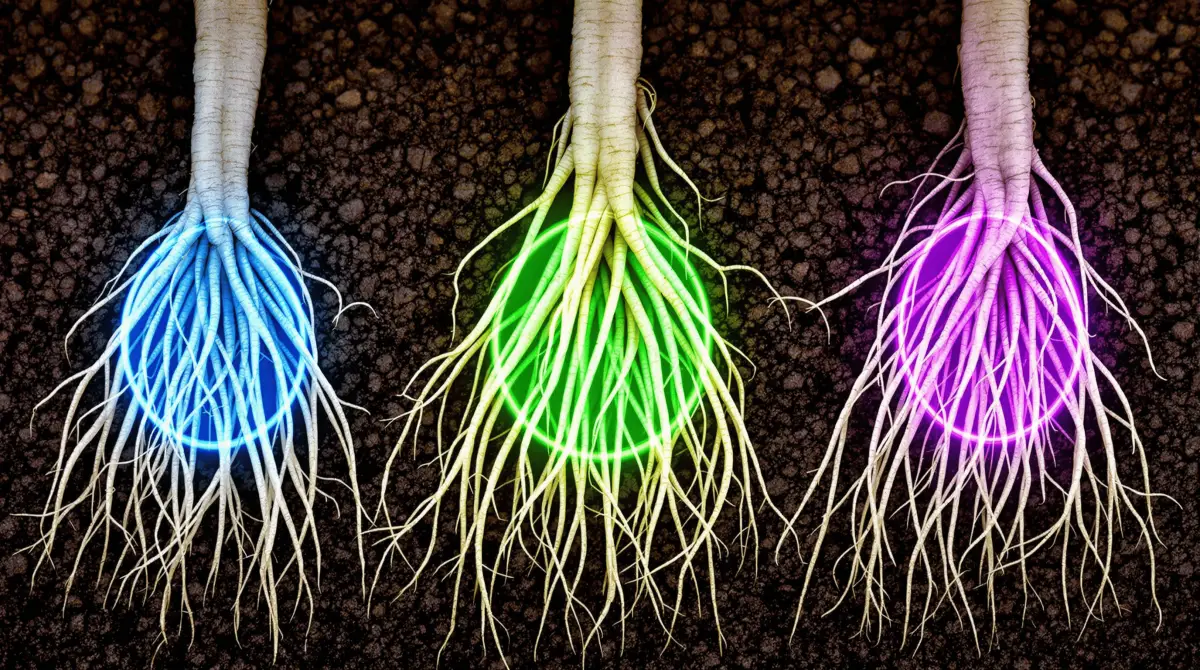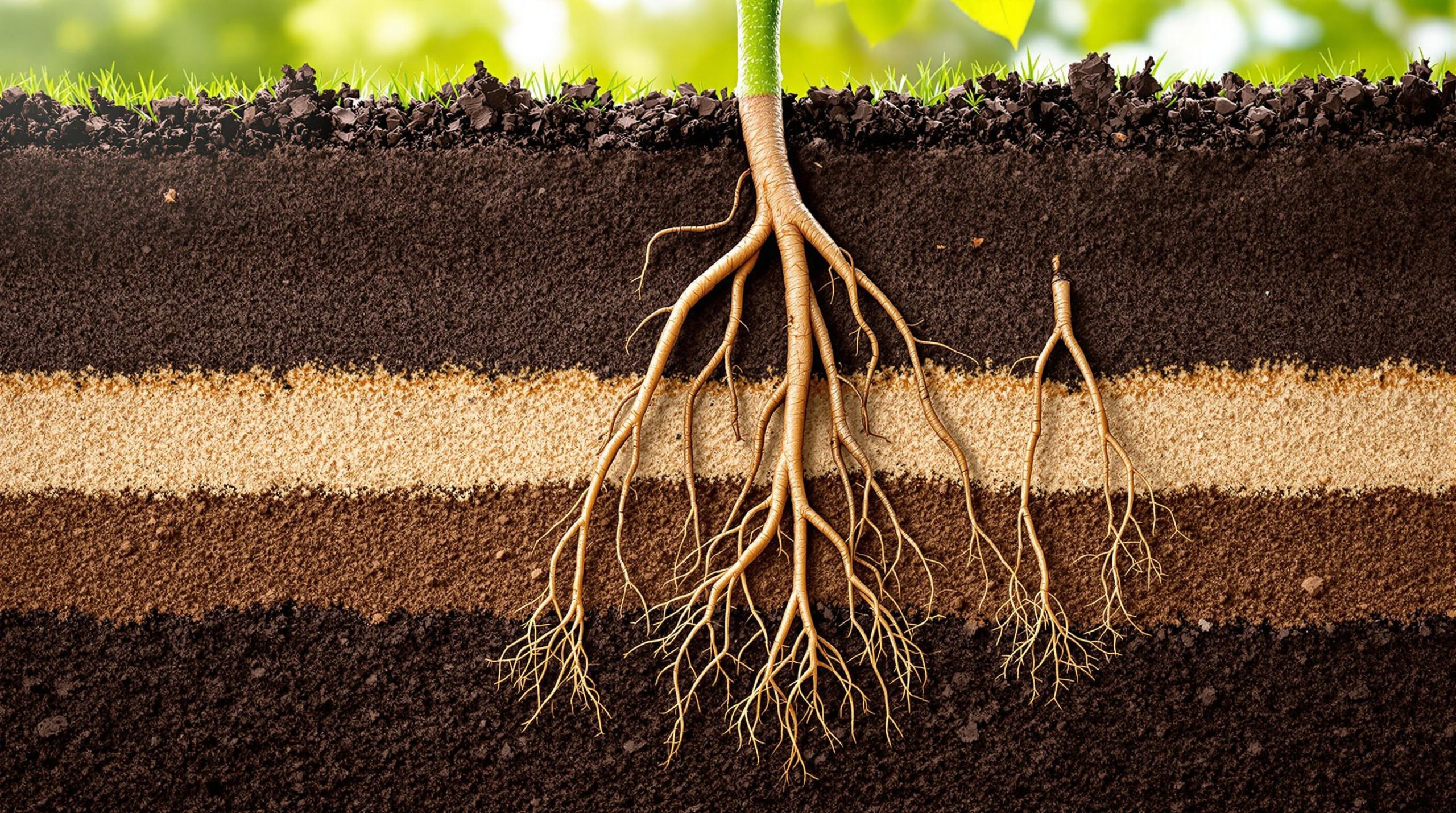Plants aren’t just passive straws sucking up whatever moisture they find—they’re tactical water managers with some seriously smart roots! A fascinating new study in the New Phytologist reveals how wheat and grass fields perform hydraulic gymnastics to optimize their water usage.
When topsoil gets parched, these botanical geniuses decrease uptake there while boosting their deep-root drinking. But the moment rain refreshes the surface? They instantly flip the script—maximizing topsoil absorption while dialing back the deep sipping. Talk about root-level intelligence!Web Search
Aquaporins Plant Roots & Water Regulation
Aquaporins, also called water channels, are channel proteins from a larger family of major intrinsic proteins that form pores in the membrane of biological cells, mainly facilitating transport of water between cells.
The cell membranes of a variety of different bacteria, fungi, animal and plant cells contain aquaporins through which water can flow more rapidly into and out of the cell than by diffusing through the phospholipid bilayer.
Aquaporins have six membrane-spanning alpha helical domains with both carboxylic and amino terminals on the cytoplasmic side. Two hydrophobic loops contain conserved asparagine–proline–alanine which form a barrel surrounding a central pore-like region that contains additional protein density.
Because aquaporins are usually always open and are prevalent in just about every cell type, this leads to a misconception that water readily passes through the cell membrane down its concentration gradient.
Water can pass through the cell membrane through simple diffusion because it is a small molecule, and through osmosis, in cases where the concentration of water outside of the cell is greater than that of the inside.
However, because water is a polar molecule this process of simple diffusion is relatively slow, and in tissues with high water permeability the majority of water passes through aquaporin..

- The Role of Aquaporins in Root Water Uptake – PMC
However, data collected over recent years clearly indicate that plant aquaporins fulfil expression and regulation properties that are expected from proteins specialized in root water transport. - Aquaporins: Highly Regulated Channels Controlling Plant Water Relations
Aquaporins are highly regulated water channels that contribute to the control of water movement at the cell, tissue, and organ levels and, hence, to the overall plant water relations in varying environmental conditions. Abstract Plant growth and development are dependent on tight regulation of water movement. Water diffusion across cell membranes is facilitated by aquaporins that provide … - Regulation of aquaporins in plants under stress
Aquaporins (AQP) are channel proteins belonging to the Major Intrinsic Protein (MIP) superfamily that play an important role in plant water relations. The main role of aquaporins in plants is transport of water and other small neutral molecules across cellular biological membranes. AQPs have remarkable features to provide an efficient and often, specific water flow and enable them to transport … - Versatile Roles of Aquaporins in Plant Growth and Development
AQPs play important roles in plant water relations, cell turgor pressure maintenance, the hydraulic regulation of roots and leaves, and in leaf transpiration, root water uptake, and plant responses to multiple biotic and abiotic stresses.
The Aquaporin Connection: How Plants Pull Off Their Water Magic
Plants aren’t just passive straws sucking up whatever moisture they find—they’re tactical water managers with some seriously smart roots! The study in New Phytologist reveals how wheat and grass fields perform hydraulic gymnastics to optimize water usage.
The Root of the Matter: Strategic Water Management
When topsoil gets parched, these botanical geniuses decrease uptake there while boosting their deep-root drinking. But the moment rain refreshes the surface? They instantly flip the script—maximizing topsoil absorption while dialing back the deep sipping. Talk about root-level intelligence!
Why this switcheroo? It’s all about “root economy.” Topsoil water might evaporate quickly, but it’s nutrient-rich real estate. Plants prefer to slurp from this premium location whenever possible, saving their deep soil reserves for drought emergencies—like keeping money in both a checking account (topsoil) and savings account (subsoil).
The Aquaporin All-Stars
The secret to this hydraulic flexibility? Tiny protein channels called aquaporins—the cellular equivalent of adjustable water faucets! These remarkable proteins form pores in cell membranes that can be opened or closed to control water flow.
When conditions change, plants appear to adjust the hydraulic permeability of their roots at different depths by regulating these aquaporins. It’s like having different water valves throughout the root system that can be independently controlled based on soil conditions.

Grass vs. Wheat: Different Strokes for Different Folks
The research team noticed subtle differences between grass and wheat systems. Grass proved more drought-tolerant in topsoil and more efficient at tapping subsoil water reserves. This might explain why your lawn sometimes stays green when garden plants wilt!
Why This Matters for Your Garden (and the Planet)
Understanding these mechanisms could help develop more drought-resistant crops—crucial in our changing climate. For home gardeners, it explains why deep watering encourages deeper root growth and drought resilience.
Next time you water your plants, remember: those roots aren’t just passive straws—they’re sophisticated hydraulic systems making strategic decisions about where and when to drink!

